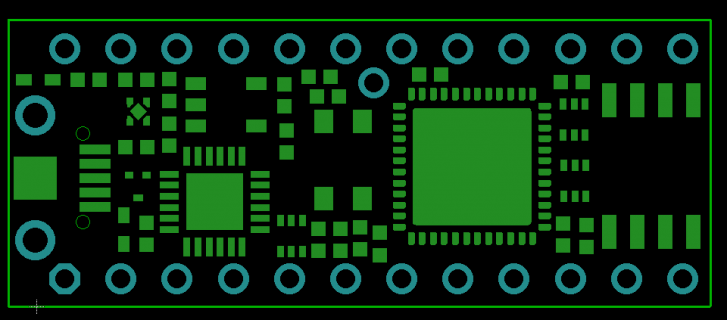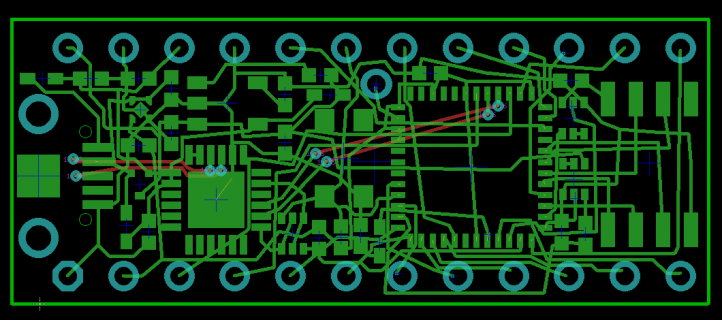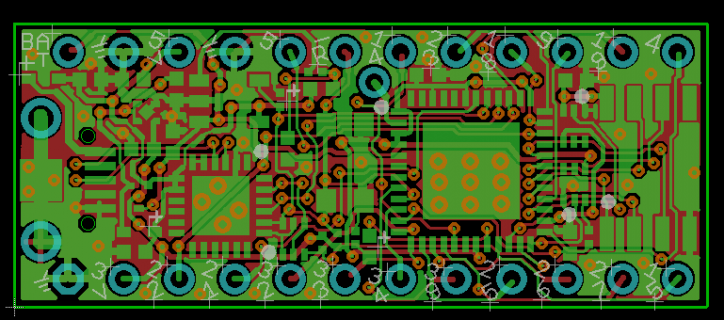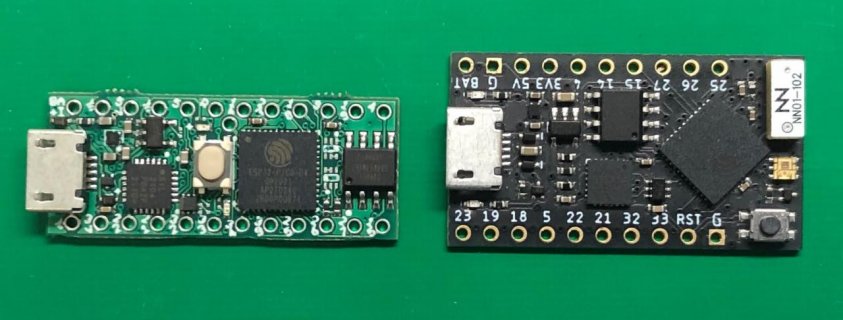After several version changes, I placed all components on the size of my Mini-T3.2. Top layer only, including the PSRAM. The CH340G has no DTR signal, so I have to use the CP2104.
For a good reason I extended the PCB 1.27mm longer, but the length of the PCB is still no longer than the TinyPICO.
I made two hardware improvements on TinyPICO to reduce battery consumption, I use electronic circuits instead of jumper cutting on the PCB underside. There is no reason why the battery charge status orange LED needs to blink when no battery is connected, that's a bit annoying. I will look into it and hope a solution can be found. I ditched the Ant. on the TinyPICO, instead I use a whip Ant. to make more room available for the final layout. The test result of the whip Ant. was good.

Can I do it? The short answer is yes, but the long answer is that I will struggle. It will take longer than I expected. The last few PCB routings will take hours if not days. The worst case is to change some parts from 0402 to 0201, or make it a 4-layer PCB like the TinyPCB. The holidays are coming and I have been on office moving. I may not be able to finish the prototype this month as I planned.
For hand Pick and Place, I will avoid 0201 as much as possible. The soldering is not an issue, but the handling is. It's so tiny and gets stuck on my tweezer easily, I cannot even shake it off. It's very hard to manually place it on a PCB. If anyone has a better solution please kindly share it.
For a good reason I extended the PCB 1.27mm longer, but the length of the PCB is still no longer than the TinyPICO.
I made two hardware improvements on TinyPICO to reduce battery consumption, I use electronic circuits instead of jumper cutting on the PCB underside. There is no reason why the battery charge status orange LED needs to blink when no battery is connected, that's a bit annoying. I will look into it and hope a solution can be found. I ditched the Ant. on the TinyPICO, instead I use a whip Ant. to make more room available for the final layout. The test result of the whip Ant. was good.

Can I do it? The short answer is yes, but the long answer is that I will struggle. It will take longer than I expected. The last few PCB routings will take hours if not days. The worst case is to change some parts from 0402 to 0201, or make it a 4-layer PCB like the TinyPCB. The holidays are coming and I have been on office moving. I may not be able to finish the prototype this month as I planned.
For hand Pick and Place, I will avoid 0201 as much as possible. The soldering is not an issue, but the handling is. It's so tiny and gets stuck on my tweezer easily, I cannot even shake it off. It's very hard to manually place it on a PCB. If anyone has a better solution please kindly share it.
Last edited by a moderator:




